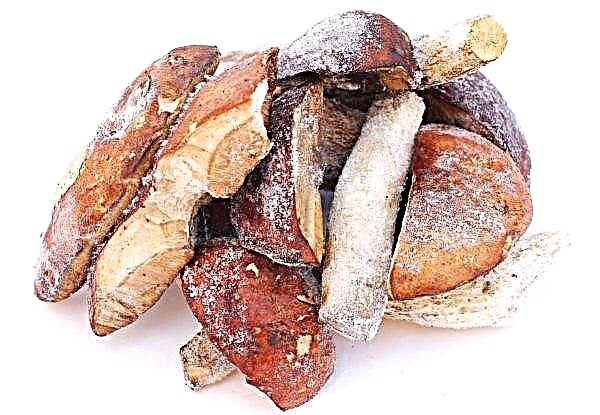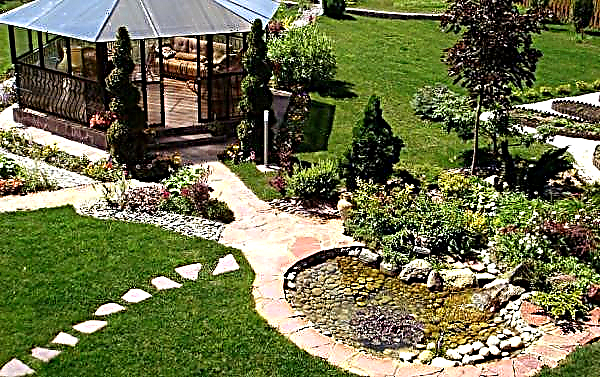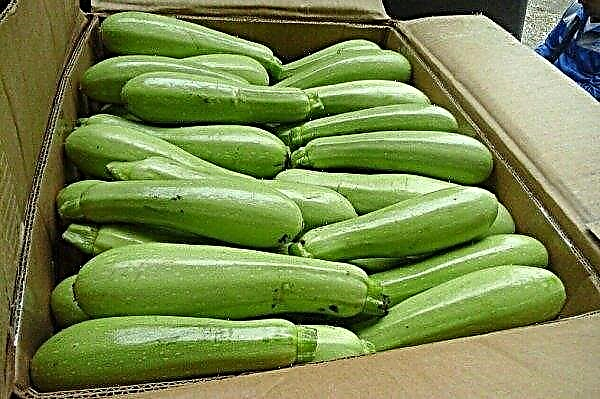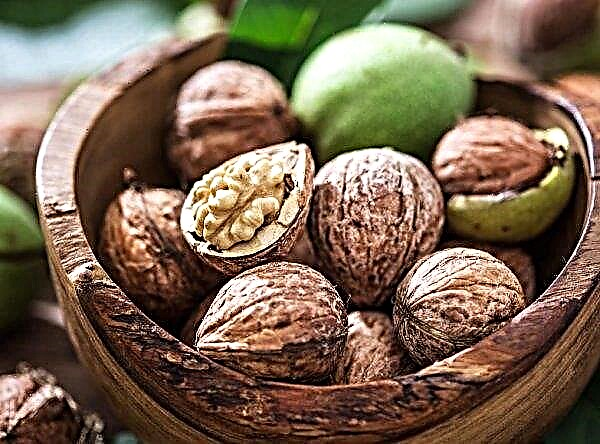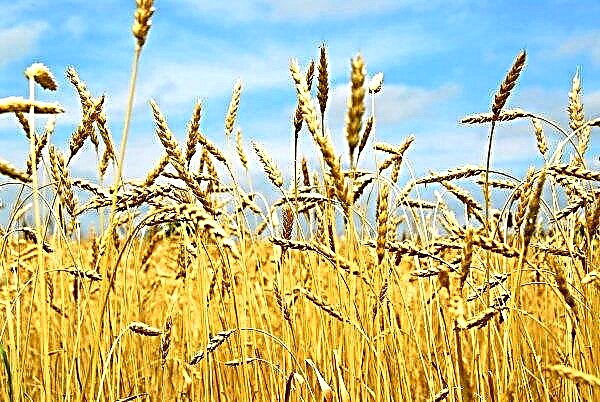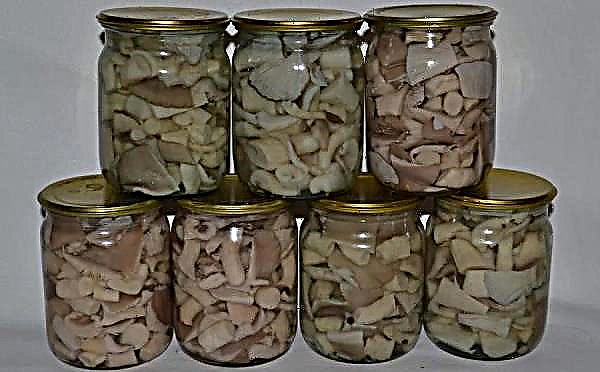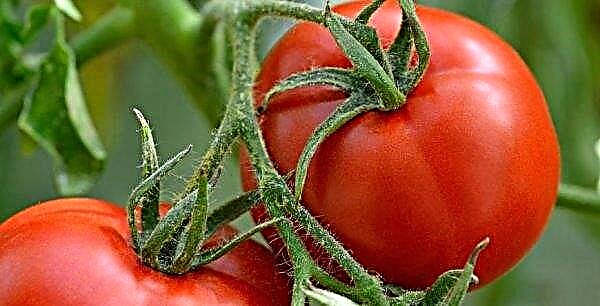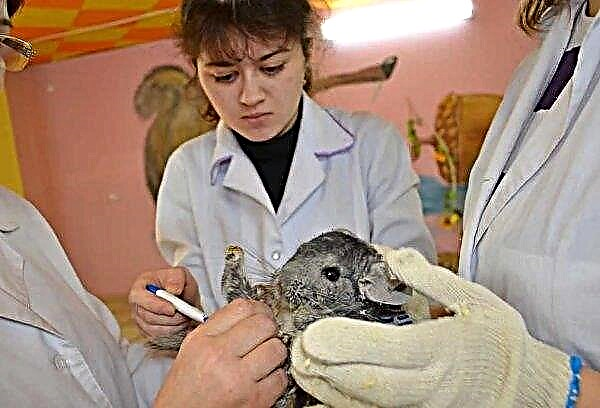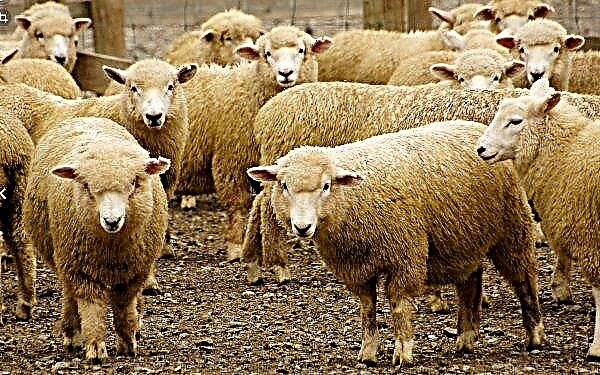Chanterelle is a mushroom of yellow-orange color and small size. It got its name because of the unusual bright color. Popularly, these mushrooms are also called "cockerels." They germinate at night where they were not there the day before.
Chanterelle Features
The hat of the chanterelle is yellow or orange in color, with a diameter of up to 10 cm, is slightly depressed, and the edge area is wavy. The surface is velvet, smooth and dry. The leg is also small - up to 8 cm, slightly lighter in color than the hat. .
The pulp has a good mushroom aroma, it can be white or white-yellow. The peculiarity of the pulp is that it smells not quite mushroom, it is more like the aroma of dried fruits or field herbs.
Did you know? There is an opinion that chanterelles are not worms. Professional mushroom pickers claim that indeed their body is much less affected by insects and pests than other species.
Views
In the world there are many varieties of chanterelles, all of them from the genus Chanterelles. Previously, they were considered lamellar, but now experts have come to a different conclusion and attributed them to non-lamellar ones. Common in the forests of Russia are: ordinary chanterelle, it is also called yellow or real, and tubular, in another way - autumn, winter, funnel-shaped.
The funnel-shaped fox does not have such a bright color, its color is faded yellow-brown or yellow-gray, and the leg is hollow. Often there is a gray funnel-shaped species. It can be recognized by the gray turned outer edge and dark thin pulp. When cooking, the flesh looks black.
Chanterelles have an inedible double - false. In order not to make a mistake and be able to distinguish them in the forest, you need to know the description of the false specimens. The first sign is an unpleasant odor. It also has a specific, very bright orange color, and the flesh may have a pinkish or red hue. Leg at the base is dark.
Real fox
You can meet real or ordinary chanterelle in pine, spruce, birch and mixed forests. It is edible and the most common. Most often, the fruits grow in whole groups than alone.
Young mushrooms with fleshy, tight hats and strong legs have value, in mature hats take the form of a funnel.
Use the mushroom to cook different dishes. These are mainly soups, sauces, pickles and marinades. It is consumed boiled, during cooking, high-quality pulp does not lose its saturated color.
Chanterelle
The tubular fox got its name because of its peculiar shape. In young mushrooms, the hat is flat, and as it grows, it acquires a tubular shape and extends. The cap is turned around the edges, and slightly noticeable fibers may protrude on the surface.
The leg of a mushroom up to 6 cm high, hollow, gradually passes into a hat.This species is common in coniferous and mixed forests, prefers acidic soils. Mushrooms can be found in large groups from the beginning to mid-autumn near conifers. A funnel-shaped chanterelle is prepared in the same way as an ordinary chanterelle. It is boiled, pickled and canned.
Where grow
Chanterelles can be found both in mixed forests, and in conifers, in birch forests. In sunny weather, they prefer to grow in the shade of trees, in places saturated with moisture. In rainy weather they can be found in the open sunny terrain.

The presented species, like many other mushrooms, grows in families. Therefore, seeing one mushroom, you do not need to rush to leave the clearing. It is better to look around: under the leaves, moss and among the branches of trees. Fruits should be cut carefully, and not uprooted. Mushrooms that grow near routes and other places that can pollute the surrounding area are best left to grow. They will bring nothing but harm.
Important! For an unknown reason, chanterelles are not advised to look next to blueberry bushes, they practically do not grow there.
Mushroom picking time
Chanterelles can be found already at the beginning of summer, but, basically, they are found singly. Their season begins in July. Mushrooms are very fond of heat and moisture, therefore, when rainy weather is replaced by warm and sunny - it is time to go to the forest for harvest. Such a climate in Russia is observed from early July to October.
Chanterelles do not cease to amaze not only with useful properties, but also with their features. They do not rot in wet weather, and in dry weather they do not dry, but stop growing. When pressed, they do not change color and texture, so they can be safely collected in large baskets and transported.
How to collect chanterelles
Chanterelles are very remarkable for their bright color and cannot but attract attention. They appear very quickly in order to foresee when the harvest will be larger, a number of factors must be taken into account before going to the forest. These include soil conditions, climatic conditions.
Important! Mushrooms need to be cut 2 cm above the ground to leave the mycelium intact and enjoy the harvest for more than one year.
And overgrown specimens do not need to be taken in a basket, they no longer have a rich taste and aroma. In addition, the beneficial properties in such mushrooms are much less. The best option would be to cut off the overripe mushrooms and hang on a tree branch so that the spores spill out. If the spores take root in the soil, then an even larger crop can be expected next year.
Growing at home
For a long time people have learned to cultivate mushrooms and grow them at home. Chanterelles are grown with mycelium, which they buy or produce at home.
You can get mycelium at home in the following ways:
- Bring ripened mushrooms from the forest, soak them in a sweetened aqueous solution. The solution is prepared at the rate of 100 g of sugar per 1 liter of water. After you need to strain the liquid, but do not drain the water, it will also be needed.
- Soak dried overripe specimens in water. After using them as planting material.
- The most reliable method is to buy mycelium in a trusted store.

On the site are found coniferous tree, spruce or birch. Nearby he needs to cut off the top ball of soil. The mycelium is laid in the pit and covered with earth. The place is covered with straw from above and watered abundantly with cold water. It will be possible to harvest mushrooms next year.
Health benefits and harms
Chanterelles are popular not only because of their excellent taste, but thanks to useful features. Mushrooms contain a large number of trace elements and vitamins. It contains copper, selenium, zinc and PP vitamins. Mushrooms are indispensable with proper nutrition, their calorie content is very low, despite the fact that the body is very quickly saturated with them.
- Scientists have identified trace elements that make chanterelles an indispensable product:
- Ergosterol - cleanses the liver of parasites and normalizes its proper functioning.
- Chinomannose - destroys helminths and other parasites in the human body.
- Trametonolinic acid and the polysaccharide K-10, which are able to fight the hepatitis virus.

- Cautions:
- Chanterelles are contraindicated for everyone who has allergic reactions to fungi.
- Do not give them to children under three years of age, because their stomach is not yet formed enough for eating heavy food.
- You can not enter into the diet any mushrooms collected from roads or enterprises.
Did you know? Yellow color gives chanterelles carotene, which is very important for human vision.
Chanterelles are unusual, bright and very useful mushrooms. They have excellent taste and are appreciated all over the world, and even a beginner can find at the edge and grow them at home. Knowing how to properly assemble and distinguish them from poisonous doubles, they will become indispensable in the diet and will only bring benefits.

